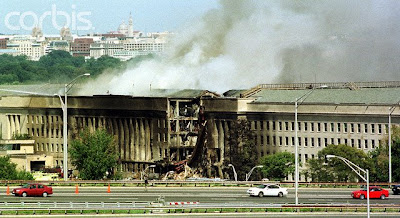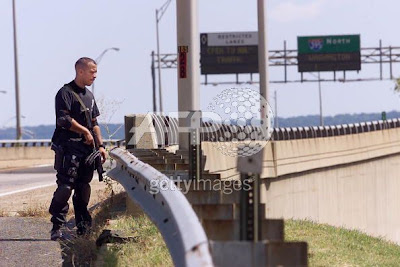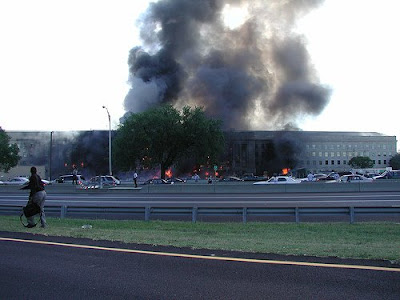Weinstein calls the evangelical and fundamentalist movement that arose over the past few decades, tantamount to a Christian Taliban. Serving in prominent positions throughout the military and in private, quasi-militaristic organizations like Eric Prince's Blackwater, they led the charge in the Bush Administration's Afghanistan and Iraq wars.
These group photographs memorialize 9-week Sunday school/Bible study classes offered by the Bussey's, which on their web page are unfortunately--and perhaps not unconsciously-- abbreviated as, "training cycle SS classes." One page in the archive is listed as, "Last SS class 28 October 04."
 Weinstein was alarmed at the culture on display, where young soldiers in government-issued fatigues pose while often holding guns in one hand and Bibles in the other. Bussey says in a note to one picture, "This was the first week our recruits brought their rifles with them. This is training to always have your weapon with you. They also proudly display their Sword (Bible)."
Weinstein was alarmed at the culture on display, where young soldiers in government-issued fatigues pose while often holding guns in one hand and Bibles in the other. Bussey says in a note to one picture, "This was the first week our recruits brought their rifles with them. This is training to always have your weapon with you. They also proudly display their Sword (Bible)."The Bussey web site speaks directly to the "parent or loved one of a recruit in the 2-39 Basic Combat Training Battalion," suggesting, "you may see them and even download the pictures for printing." But it would appear the photographs were intended for a purpose larger than just family life.
Two group shots were not taken down off the Bussey's site. In them, no guns are on display, and only one Bible can be seen--a large black book held prominently by someone in the center of the group.
An investigative report MRFF issued says, "Because these photos are all clearly deliberately posed, there is no question that they were taken for the purpose of promoting the Military Ministry. Apparently, they're teaching the soldiers right off the bat in basic training that it's OK to violate the same regulation that the Pentagon Inspector General found the Christian Embassy officers guilty of violating."
That reference is to a promotional video made in the halls of the Pentagon in which numerous uniformed service members, including four generals, laud an outside Christian group, contrary to policy that prohibits it while in uniform.
 But what Bussey calls "God's Basic Training," as we see it in two large-group images, also carry a coded reference so subtle that I found it chilling when I spotted it. Almost everybody is holding up camouflage-printed paperback Bibles as they smile for the camera. Quite deliberately, the group was organized around two very discrete hand signals held up amidst the crowd. Often interpreted as "the devil's horns," the ring and middle fingers are tucked under the palm. Both George and Laura Bush have been photographed flashing the sign, usually to friends or intimates.
But what Bussey calls "God's Basic Training," as we see it in two large-group images, also carry a coded reference so subtle that I found it chilling when I spotted it. Almost everybody is holding up camouflage-printed paperback Bibles as they smile for the camera. Quite deliberately, the group was organized around two very discrete hand signals held up amidst the crowd. Often interpreted as "the devil's horns," the ring and middle fingers are tucked under the palm. Both George and Laura Bush have been photographed flashing the sign, usually to friends or intimates.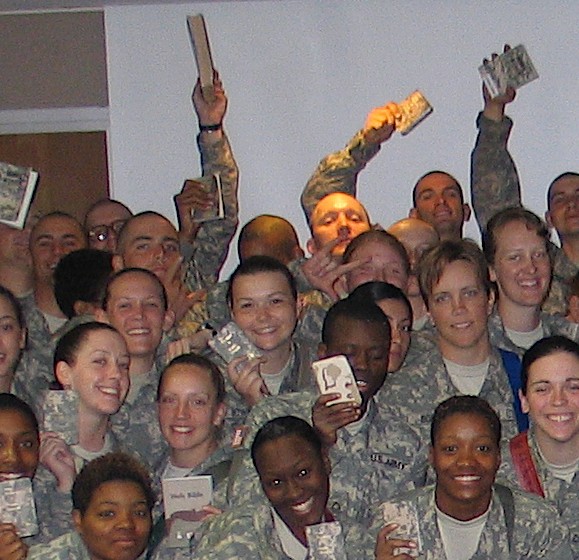
Could it be an accident or a coincidence? Since we find paired hand signals of "the devil's horns" in the other group shot, I think not. There, they are differently disguised, and at first I could only spot one--held aloft by a tall young man in the back row. Many people hold guns, with only one young man in the center foreground holding up a small camouflaged Bible, which reduces it into a coded reference. It is paired, close behind him, with a young woman who also makes the hand signal.

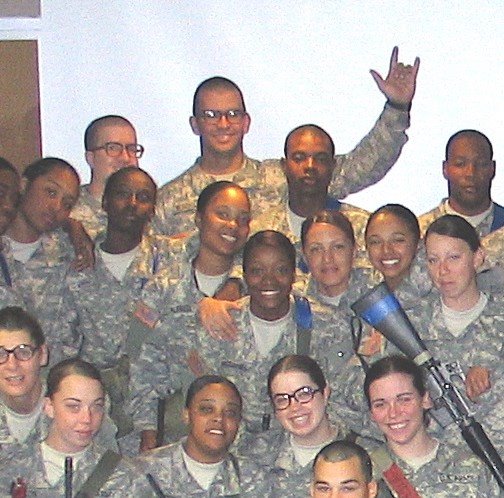
In the last image, which appears to be just a small portion of a larger group photograph, there are many guns and many Bibles and many hand signals of "the devil's horns." Here we begin to really feel a menace.
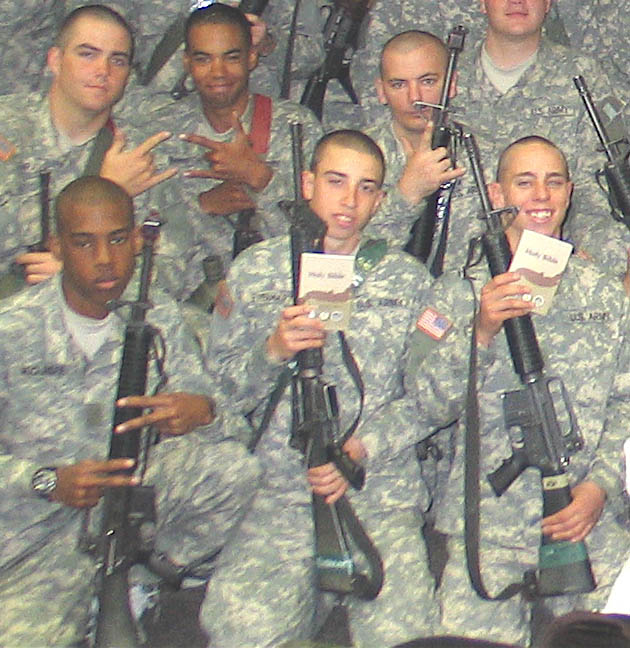 To compose group shots like this marked with such subtly manipulated coded references does not indicate a game or light hearted amusement. Clearly, an elaborately contrived, powerful secret code is being transmitted.
To compose group shots like this marked with such subtly manipulated coded references does not indicate a game or light hearted amusement. Clearly, an elaborately contrived, powerful secret code is being transmitted.One that is not benign either, in my opinion. In the MRFF report is a photograph of an office door in Fort Riley Kansas, where someone has made an odd choice and posted a picture of Ann Coulter, with her infamous quote delivered in the aftermath of September 11th, 2001, "We should invade their countries, kill their leaders and convert them to Christianity," and the date it was published, September 13, 2001.
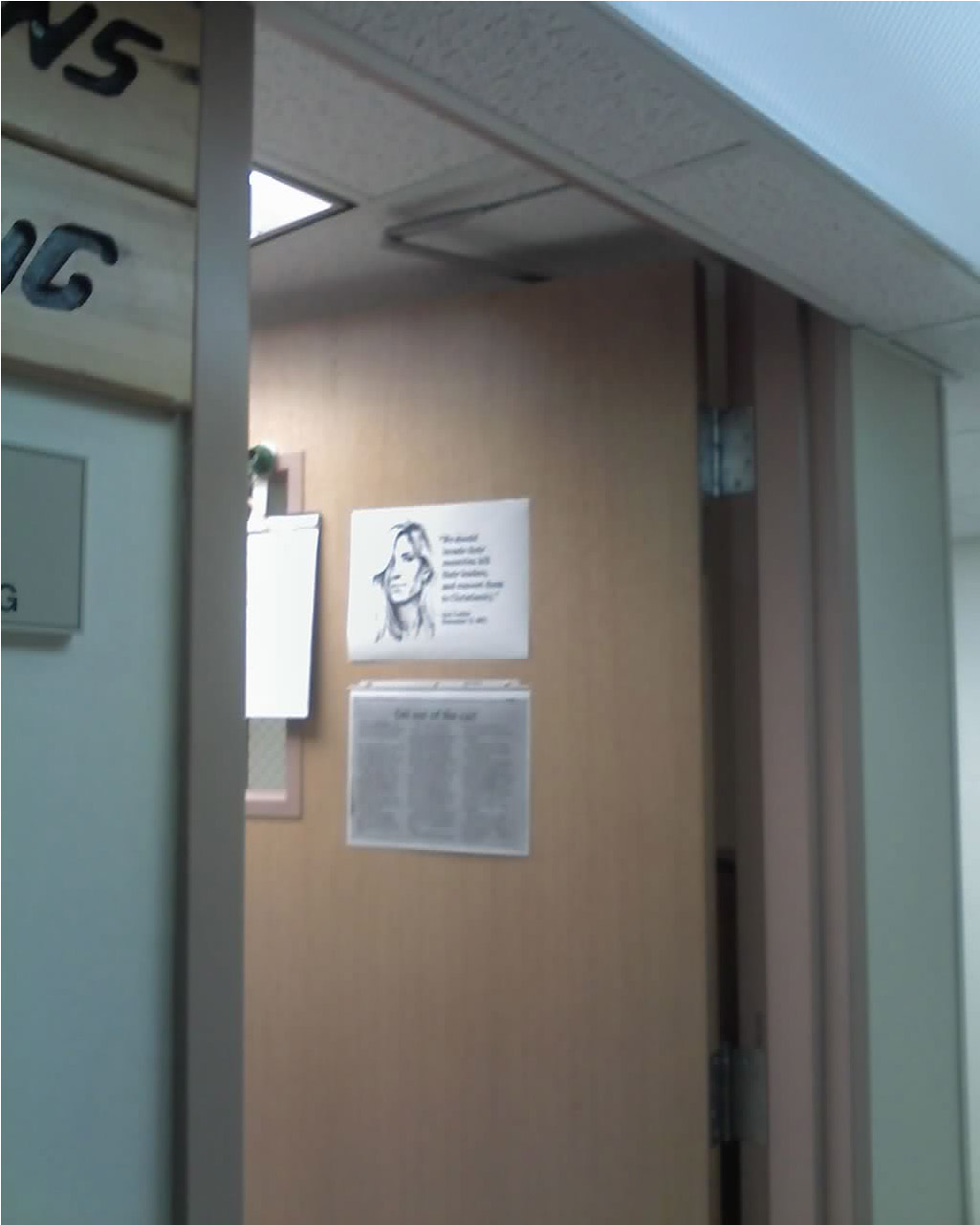 September 13th was also the day that Jerry Falwell and Pat Robertson unleashed an equally infamous quote. They blamed 9-11 on gays, abortionists, the ACLU and the People for an American Way, and they generated a firestorm of criticism in response. Something always seemed very fishy to me about this pair, especially that morning. There was such a cool rationality to the way they unfolded the argument, with Robertson inviting Falwell onto his show that day with a hearty, "Jerry, I'm delighted to see you this morning!"
September 13th was also the day that Jerry Falwell and Pat Robertson unleashed an equally infamous quote. They blamed 9-11 on gays, abortionists, the ACLU and the People for an American Way, and they generated a firestorm of criticism in response. Something always seemed very fishy to me about this pair, especially that morning. There was such a cool rationality to the way they unfolded the argument, with Robertson inviting Falwell onto his show that day with a hearty, "Jerry, I'm delighted to see you this morning!"Coulter was made allowance for because she was said to be upset writing about her friend Barbara Olsen, who died--supposedly--on American Airlines Flight 77. But Coulter's sentiment does not ring true to my ear as upset, and the pairing of two blonds becomes a signal to match the pair of old preachers, as everyone tries on their new post-9-11 agendas. That these radical right-wing reactionaries were deliberate components of a planned new system, I have no doubt in my mind. But where that has left us, is another question entirely.




























